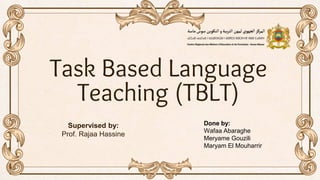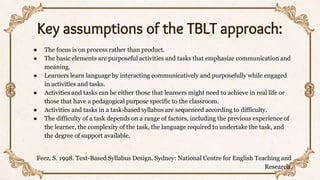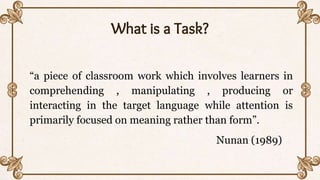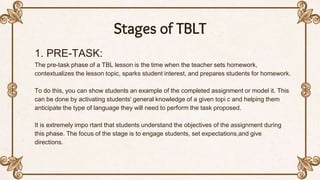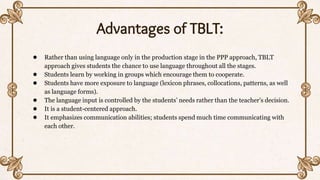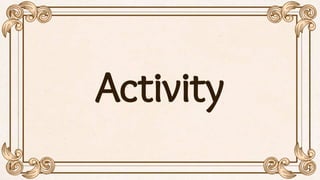Task-Based Language Teaching (TBLT) is an approach to language education that emphasizes the completion of meaningful tasks for learning, developed in the 1980s by N. Prabhu. It focuses on interaction and the actual use of language in context rather than just on grammar and form, aiming to enhance language acquisition through real-world tasks. While TBLT fosters collaboration and communication among students, it also faces challenges such as reliance on the first language and potential neglect of accuracy.
